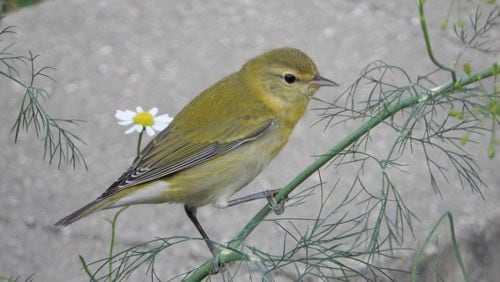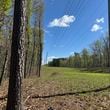Between now and mid-May, millions of songbirds — warblers, tanagers, thrushes, vireos, flycatchers — will be migrating across Georgia to nest. Many of them will be setting up housekeeping here while numerous others will continue passing through the state on their way to spring and summer nesting grounds farther north.
The great waves of migrants, decked out in spring breeding colors, will fly mostly at night, when the air is cooler and less turbulent, and the risk of predator attack is low. During the day, they will stop to rest and feed and try to stay hidden. An exception is the ruby-throated hummingbird, which migrates over land during the day.
But day or night, a serious danger lurks — building collisions. Crashing into buildings, especially those with reflective, glass-covered surfaces, is a major threat to birds during the day. At night, bright lights in tall buildings, homes, communication towers and other structures can disorient birds. Bewildered, they crash into the structures and, mortally injured, plummet to the ground.
The toll is massive. Nationwide, nearly 1 billion birds may die annually from building strikes, say researchers at the Smithsonian Institution’s Migratory Bird Center.
To gauge the problem in Atlanta, volunteers with Birds Georgia (formerly Georgia Audubon) since 2015 have been walking predetermined routes in the city during early morning hours of spring and fall migrations to look for birds killed from hitting buildings. The project is being extended this year to Savannah and Brunswick.
So far, volunteers have collected more than 4,200 dead birds (only a fraction of the true toll) representing 135 species. Ruby-throated hummingbirds are the most commonly found species, followed by Tennessee warbler, Swainson’s thrush, cedar waxwing and ovenbird.
You can help protect the birds. An easy way is to reduce nighttime lighting during peak migration times. The “Lights Out Georgia” program encourages homeowners and businesses to turn off lights from midnight to 6 a.m. during peak migration.
More information: birdsgeorgia.org/project-safe-flight.html
IN THE SKY: From David Dundee, Tellus Science Museum astronomer: The moon will be last quarter on Monday. Mercury is low in the west just after sunset. Venus, Mars and Saturn are very low in the east just before sunrise. Jupiter is in the west at sunset.
Charles Seabrook can be reached at charles.seabrook@yahoo.com.
About the Author






